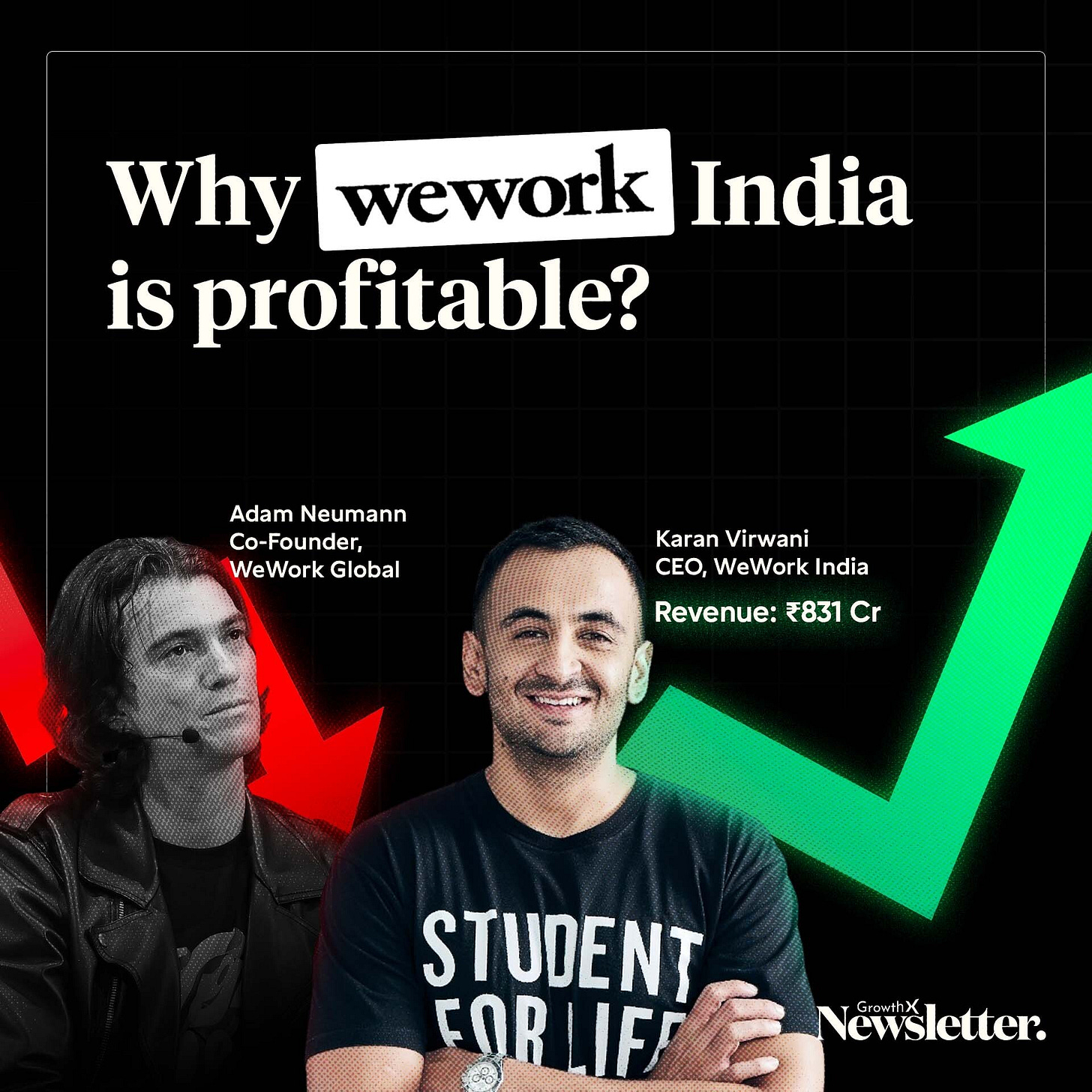How is WeWork India profitable?💰
The devil is in the details.
Welcome to the 196th edition of the GrowthX Newsletter. Every Tuesday & Thursday I write a piece on startups & business growth. Today’s piece is going to 94,400+ operators & leaders from startups like Google, Stripe, Swiggy, Razorpay, CRED & more
WeWork Global is filing for chapter 11 bankruptcy in the US. But, it's India business is profitable from Day 1 & is unaffected. So what did the India division find out that Global org missed?👇
Honestly, WeWork is a real estate business 🏢
The idea is pretty simple 👇🏻
- Lease commercial office buildings
- Upgrade them to look & feel cooler
- Rent them per seat at a premium price
- Maintain & care for the customer experience.
WeWork leases it at a much lower cost per square foot than it gives out when it sells them to companies on a per-seat basis. The difference between a commercial lease (₹75 to ₹120 per sq. ft) & sales per seat varies from ₹8,000 to ₹20,000.
So, why did WeWork Global go bankrupt?
WeWork was pitched as a tech business with tech valuations. If it had been valued as a real estate commercial lease arbitrage business, it would be 1/20th or I would argue 1/50th the value.
And, because it was valued as a tech business - it had to behave like one. Show how tech helps scale revenues with an exponential curve.
All of this led WeWork Global to open office spaces in areas where they couldn't generate enough demand for the ₹8,000 per-seat offering. Low demand meant it couldn't pay for the crazy leases it paid to those property owners.
So, why did WeWork India succeed?
The answer is in the nuance/ the details
1/ WeWork India is a joint venture 🫂
Embassy used ‘WeWork’ brand name to partner with Prestige & DLF to build a strong North India presence. Today Embassy owns < 25% of its spaces as a landlord & still owns 73% of WeWork India - smart!
2/ The market WeWork it went after 🏃🏻
The global WeWork positions itself as a co-working space offering. WeWork India's pitch is "flexible workspaces for growing businesses". The conscious decision to not go after freelancers & small individual customers paid off.
3/ Devil pricing for short contracts 💰
WeWork India isn't cheap. Try booking a 10-seat conference room in WeWork BKC (Mumbai) - it will cost you 10K for a 3-hour slot on a weekday. This is by design. It wants you to choose a long-term commitment (costs much less) than ad-hoc bookings.
4/ Focus on large-scale customers 💼
Open the WeWork India page and see the kind of logos they talk about. They specifically don't want to target, say, bootstrapped, pre-revenue startups. They want to pick companies that have the appetite to pay a premium.
5/ Being honest with failing PMF 🩹
WeWork Global never admitted that their business model fails in Tier 2/3 US locations. They burned their wallets. WeWork India mindfully penetrated in metro cities only.
That's all for now. Think for a minute - are you going after a customer who has the appetite to pay a premium price? Will they pay over a really long period of time? Choose who you build for, carefully.
Thank you for supporting this newsletter 🪄
We spend a sizable portion of our time writing pieces for this newsletter. If you find it interesting, do share it with your closed circle / twitter.






